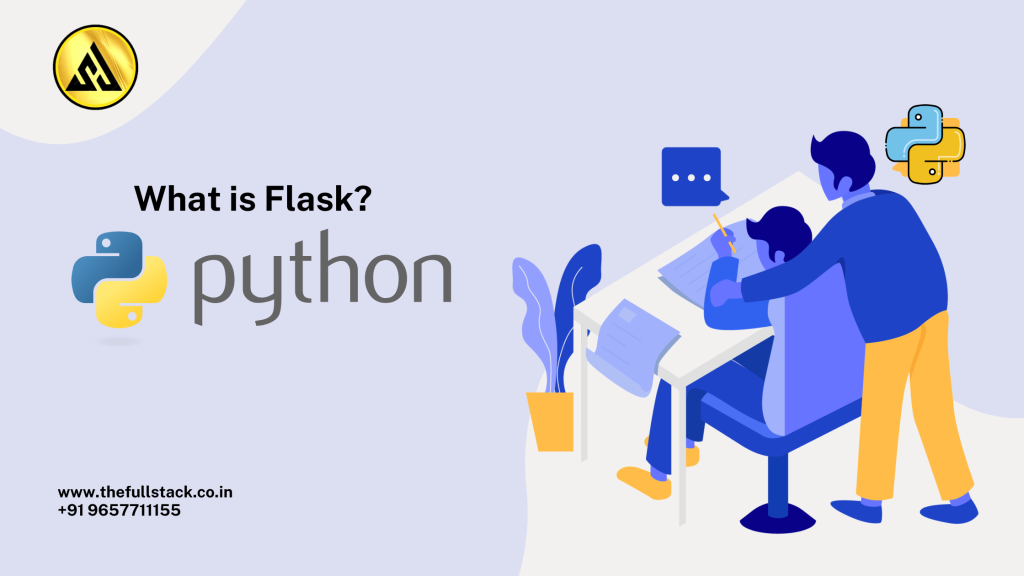Python has become the most popular language in the constantly changing field of web development because of its ease of use and adaptability. Flask is one of the most well-liked Python web frameworks among those accessible to developers seeking a simple, adaptable, and lightweight solution for creating web applications.
We’ll go over what Flask is, why it’s used, its main functions, and how even a novice can begin using Flask to create web apps in this blog.
What is Flask?
Flask is a Python framework for microwebs. As a component of the Pallets Project, it was created by Armin Ronacher and made available in 2010. Because Flask doesn’t require certain tools or libraries, it is referred to as a “micro” framework. It provides you with the basic minimum required to launch a web server and lets you add more features as required.
Flask is frequently used to create everything from basic portfolio websites to fully functional web applications because, despite its simplicity, it is strong and scalable.
Why Use Flask?
Flask is ideal for:
- Beginners learning web development with Python
- Rapid prototyping of web applications
- Startups and projects that need flexibility
- Building RESTful APIs
- Scalable production-grade applications (when combined with extensions)
Here are some core advantages:
| Advantage | Description |
|---|---|
| Lightweight | Only what you need. No bloat. |
| Extensible | Easily integrates with databases, templates, and third-party plugins. |
| Modular | Add features only when required using Flask extensions. |
| Pythonic | Uses pure Python, making it easy for Python developers. |
| Huge Community | Tons of tutorials, documentation, and open-source support. |
How Flask Works – The Core Concepts
To understand Flask better, let’s break down its core components:
1. Routing
Routing decides what URL triggers what function. In Flask, it’s very simple:
from flask import Flask
app = Flask(__name__)
@app.route("/")
def home():
return "Welcome to Flask!"
2. Request and Response
Flask uses request to access data from a client and returns a response.
from flask import request
@app.route('/greet', methods=['POST'])
def greet():
name = request.form['name']
return f"Hello, {name}!"
3. Templates with Jinja2
Flask uses Jinja2, a modern templating engine, to create HTML pages dynamically.
from flask import render_template
@app.route('/about')
def about():
return render_template('about.html')
4. Forms and User Input
Flask can handle user input easily through forms and request data.
5. Flask Extensions
You can add capabilities like:
- Flask-SQLAlchemy: Database integration
- Flask-WTF: Form handling
- Flask-Login: Authentication
- Flask-Mail: Email support
Basic Folder Structure of a Flask App
/myapp
/static # CSS, JS, images
/templates # HTML files (Jinja2 templates)
app.py # Main Flask application
Setting Up Your First Flask App
Step 1: Install Flask
pip install flask
Step 2: Create app.py
from flask import Flask
app = Flask(__name__)
@app.route('/')
def hello():
return "Hello, Flask World!"
if __name__ == '__main__':
app.run(debug=True)
Step 3: Run Your App
python app.py
Open your browser and go to http://127.0.0.1:5000/
You’ve just built your first Flask app!
When Should You NOT Use Flask?
Despite its strength, Flask might not be the greatest option if
- A built-in admin dashboard, such as Django, is required.
- Your application uses a lot of databases. -driven
- Convention is more important to you than arrangement.
In such cases, a full-stack framework like Django might be a better fit.
Real-World Applications Built with Flask
- Pinterest (initially built on Flask)
- Netflix’s internal tools
- Reddit’s microservices
- Lyft’s web services
This proves Flask’s ability to scale when needed.
Conclusion
Flask is a philosophy of independence, simplicity, and minimalism rather than merely a micro framework. Flask provides the framework to let you to use Python to create a prototype of the next great idea, a REST API, or a basic portfolio.
You may be like this:-
Is Java or Python Better for Full-Stack Development?
Python Full Stack Developer Salary in Dubai: A Lucrative Career Path

